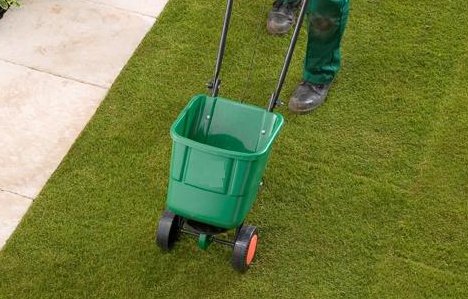Home / Information & advice / Turf & Lawns Advice / Lawn aftercare / Fertilising your turf
To encourage good rooting, you need to ensure that the plant has proper nutrients. Proper plant nutrition means that the soil has all of the 16 essential elements available to the grass, and the amounts of these elements are not too high or too low. If the level of nutrients is too high, they will be toxic to the grass and could injure or kill it. Too little will generally not kill the grass, but it will weaken it, making it thin and discoloured.
Yes, your turf does come already fertilised. Rolawn prepares your new turf to look beautiful on the top and to grow strong, deep roots. We do this by using a formulation of fertiliser that will cause the turf leaves to be dense and green, while keeping the roots lean and hungry for nutrients.
When your new turf arrives it will aggressively grow into your soil in search of nutrients. This is the reason it is recommended that you incorporate a starter fertiliser into your soil before you install your turf. Therefore, it is recommended that you do not immediately fertilise your new lawn after it is installed.

Deciding when to fertilise is not as easy as it sounds. The best method used to decide this is measuring the amount of nutrients that are in both the soil and the grass plant. However, this is costly and takes time, and must be done by a trained professional. We recommend that the homeowner uses a combination of visual inspection and general guidelines from Rolawn. There are three main features to fertilizing:
When to apply?
How much to apply?
What to use?
When your lawn starts to grow in the spring, put on the first application of the new season. Under certain climatic and growth conditions a newly-laid lawn that has not been laid on soil which includes a pre-turfing fertiliser, might need to be fed within the first few months. Ideally a lawn fertiliser should be applied just before rainfall is forecast, when the soil is moist but the sward is dry.
A suitable spring lawn food should ideally be applied in early spring (March/April). A second application can be applied 6 to 8 weeks later.
An autumn lawn food should ideally be applied in early autumn (September).
Fertilisers are usually designated by three numbers printed on their packaging. The three numbers refer to the percentage of the product in the container that is nitrogen (N), phosphorus (P), and potassium (K). The numbers are always in the same order: N:P:K. For example, if a 14 kilogram bag of fertiliser lists the N:P:K as 10:7:3, these numbers are the respective percentages of nitrogen, phosphorus and potassium.
You should use a fertiliser with all three elements, but check with your local garden centre for some help with both the selection and calculations for applying fertiliser. If you are not satisfied with the results after fertilising your lawn, consult a turfgrass expert. There are many reasons why grass does not grow properly, and lack of sufficient nutrients is only one possible cause. You may be wondering why fertilisers are mostly N, P and K, when there are 13 other elements needed for good turf growth. Two of these elements are carbon and oxygen, and these are taken from the air. Generally, the other 11 elements exist in sufficient quantities in most soils. In addition they are not needed in as great a quantity as N, P and K.
It is important that the fertiliser be spread uniformly, otherwise your turf will be both dark green and yellow. You can spread fertiliser in many ways – by hand, with a rotary spreader, or with a drop spreader. Using your hand is appropriate for small areas where it is difficult to turn a spreader. The drop spreader is very accurate but you can easily misapply fertiliser using it because the fertiliser is difficult to see in the turf.
A method to overcome this difficulty is to mix a small amount of lime in with the fertiliser to make it white. The rotary spreader (hand-held or push) will cover a large area quickly, and generally, your application will be uniform. Try some different methods and talk to your neighbours or a garden centre manager to make a good choice.
Visit our guide to using a spreader to fertilise your lawn for further advice on types of spreaders and how to calibrate them.
Further lawn care advice can be found in our Information Centre. You can also sign up for lawn tips to receive regular lawn care advice, news and promotional offers by email which will help you get the best from your lawn.
For more techniques to help you maintain a healthy lawn, explore our other lawn aftercare advice.
You can also sign up to our newsletter to receive free seasonal lawn care advice and reminders of essential maintenance, as well as general horticultural advice and special offers from Rolawn.